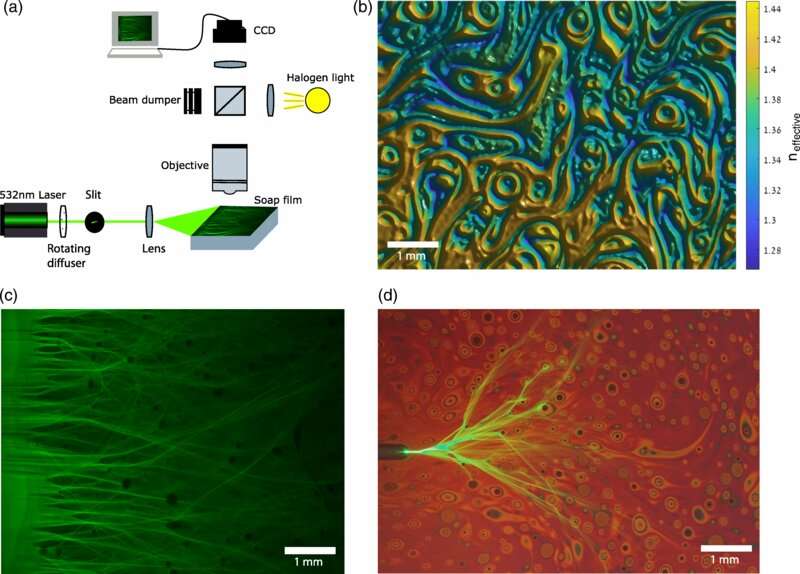April 19, 2022 report
Observation of the branched flow of spatially incoherent light in dish soap

A team of researchers at Technion-Israel Institute of Technology has conducted the first experimental observation of the branched flow of spatially incoherent light—in this case, using liquid dish soap. In their paper published in the journal Physical Review X, the group describes their experiments involving shining light on 2D samples of liquid dish soap and their observations.
Prior research has shown that light moving through a disordered media can lead to branching, where some amount of a beam can take one path around an object while another part of the same beam can take another path. Such branching can lead to channels of light moving through a given medium. In this new effort, the researchers used liquid dish soap as the medium.
The team applied liquid dish soap to a plate of glass (creating a 2D medium) and then shined a light through it from a side edge. They took pictures from above as the light moved through the soap toward the opposite edge. To enhance the action, the researchers added some dye that grew brighter as it was struck by more light, which was applied using an optical fiber.
Studying the photographs, the researchers were able to observe the light initially strike a dense portion of the soap, then split and create two channels. As the light in the two channels struck other dense parts of the soap, they split and so on and on until the light reached the opposite edge. The researchers note the effect was similar to a lightning strike or even the form of a river delta.
The researchers also noted that unlike water, the flow of light can travel in any direction, which allowed the light to also travel up toward the camera. They also conducted an experiment that involved testing what happened when some of the light coalesced after splitting—some of which was in sync, and some of which was not. By adjusting the light source, they were able to see that in areas where the light was in sync, it grew brighter, whereas in those areas where it was not in sync, it grew darker due to interference.
More information: Anatoly Patsyk et al, Incoherent Branched Flow of Light, Physical Review X (2022). DOI: 10.1103/PhysRevX.12.021007
Journal information: Physical Review X
© 2022 Science X Network





















